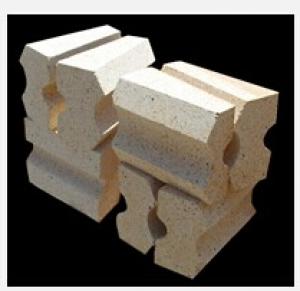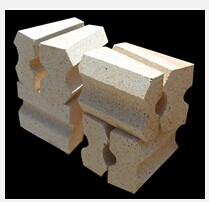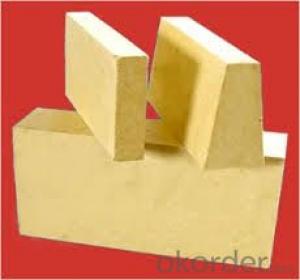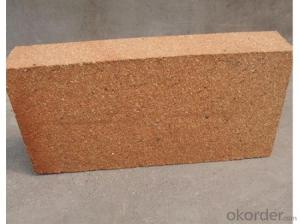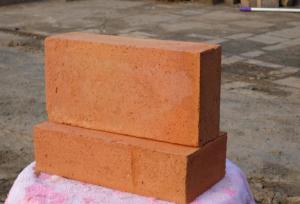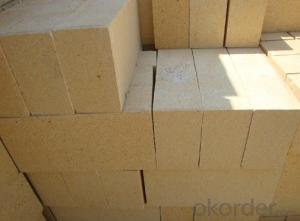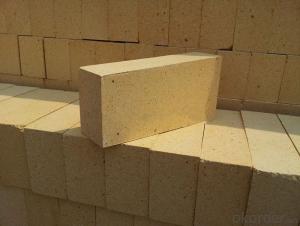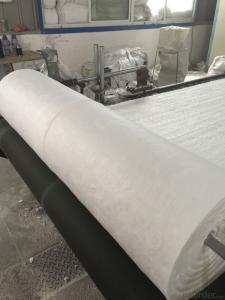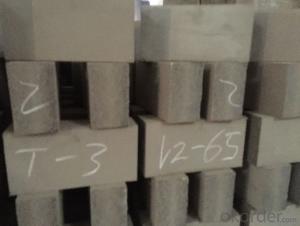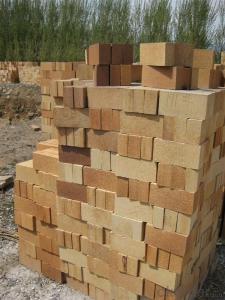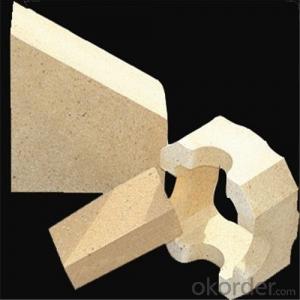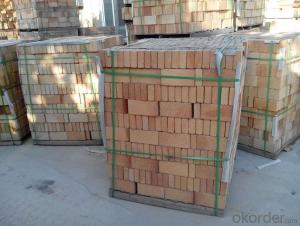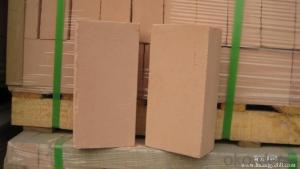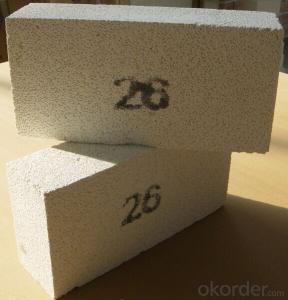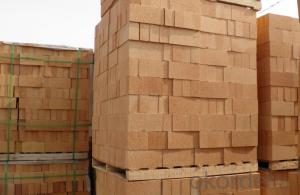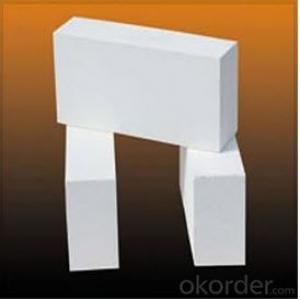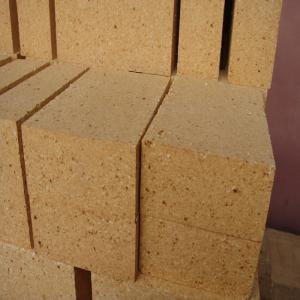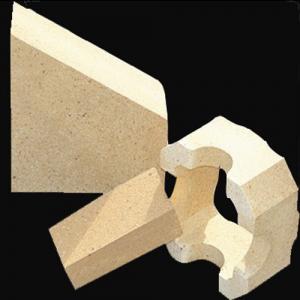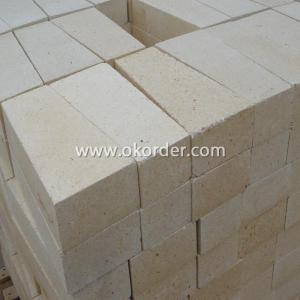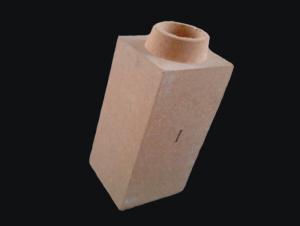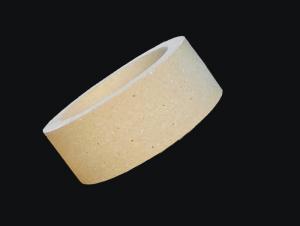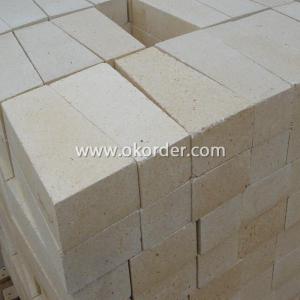Fireclay Brick - Refractory Fire Clay Brick
- Loading Port:
- China Main Port
- Payment Terms:
- TT OR LC
- Min Order Qty:
- -
- Supply Capability:
- -
OKorder Service Pledge
OKorder Financial Service
You Might Also Like
General Information
Fireclay bricks are made from clinker clay. The alumina content ranges from 36% to 48%.
Feature
Low thermal conductivity
High refractoriness
High mechanical strength
Excellent thermal shock resistance
Application
Fireclay bricks are commonly applied in blast furnace, hot blast furnace, teeming ladle, glass furnace, etc.
Item | Index | |||
SK-30 | SK-32 | SK-34 | SK-35 | |
AL2O3 % | 30 | 35 | 38 | 45 |
Fe2O3 % | 2.5 | 2.5 | 2 | 2 |
Refractoriness(SK) | 30 | 32 | 34 | 35 |
Refractoriness Under Load, 0.2MPa, (°C ) | 1250 | 1300 | 1350 | 1400 |
Apparent Porosity (%) | 22-26 | 22-26 | 20-24 | 20-22 |
Bulk Density (g/cm³) | 1.9-2.0 | 1.95-2.1 | 2.1-2.2 | 2.15-2.22 |
Cold Crushing Strength (MPa) | 20 | 25 | 25 | 30 |
Thermal Expansion at 1000°C (%) | 0.8 | 0.6 | 0.6 | 0.5 |
Note:
- Q: does the furnace wall use refractory bricks to keep the heat? Or use the insulation material to keep heat ?
- The furnace arch and the furnace wall are all refractory bricks, and the refractory brick is a kind of thermal insulation material!
- Q: What are the simple ways to distinguish between excessive clay bricks and less fired clay bricks?
- Refers to the internal combustion brick to save raw material and fuel in clay mixed with waste parts containing combustibles, such as coal cinder, coal gangue and fly ash, and make the fuel burning in a brick in the baking process, so as to obtain uniform calcination temperature and combustion, called by this method of roasting brick brick.
- Q: What are the reasons for the production of waste in the formation of fireclay bricks?
- The reasons for the production of waste when form fireclay bricks: Tile size is unqualified. This is due to the mold installation is not firm, the template transfers when molding; if the amount of material being added fluctuates largely, also can cause the body size changing. Ji Yangon Chi lie charge generation layer containing decyl poke pull and crack. The molding operation does not according to the principle of the light first and the thick later. At the initial pressure, the air doesn't releases, which causes the elastic aftereffect by repressing. Too much mud water, uneven mixture and inequal template all can make the body produce layer crack or crack. Twist. The template is used for too long, the template deforms, so raw brick deforms, the amount of water is too large, brick naturally deforms, causing the body twist. Miss edge and angle. Because of poor plasticity of mud, particles segregate, feeding back corner is not real, the body will appear side missing and angle modulation phenomenon. Bias voltage. Due to the deflection of the die head or the uneveness of mold bottom. Loose。 Due to insufficient feeding amount or insufficient pressure times.
- Q: The boiler is divided into several categories according to the structure, what characteristics does each have?
- package boiler and assemble boiler are divided into vertical boiler and horizontal boiler. Vertical boiler. Assembled boiler adapts to boiler more than 6 tons, the package adapts to boiler less than 10 tons.
- Q: The difference between fireclay brick and refractory cilica brick in the application.
- Good thermal shock stability, long-term use temperature is not higher than 1300 degrees, high temperature, high strength, low price of clay brick characteristics, thermal shock stability is the worst, a scrap, can be long-term used under the condition of high temperature (exceed 1400 degrees Celsius) . The temperature of silica brick's soft bearing is close to the melting point. Other industries basically don't use, but the comprehensive performance of high temperature is not good, widely used in low temperature parts of a variety of furnaces. The silica brick is generally used in the coke oven and glass kiln, but anti alkali erosion ability is poor
- Q: What's the difference between fired clay bricks and sintered porous bricks?
- Clay, shale, coal gangue or fly ash as the main raw material, calcined by the hole rate of not less than 25%, the size of the hole is small and large number, mainly used for load-bearing parts of the brick, referred to as porous brick. At present, sintered porous bricks are divided into two types of P bricks and M bricks. As compared with ordinary clay bricks, sintered porous bricks have higher compressive strength, corrosion resistance and durability, as well as light weight and good thermal insulation performance. Sintered porous bricks can be widely used in load-bearing walls of industrial and civil buildings.
- Q: Do refractory bricks resist corrosion and sulfur?
- There are anticorrosion and acid proof refractory bricks
- Q: Where are clay bricks or cement bricks?
- Cement brick is the use of fly ash, cinder, coal gangue, slag, chemical residue or natural sand, sea mud etc. (more than one or several kinds of raw materials) as the main raw material, made of cement coagulant, a kind of new wall materials by high temperature calcination made called cement brick.
- Q: does the electric kiln burner need to be sealed?
- seal when open the kiln, and observe the temperature, when the temperature reaches a point, you can move the firebrick away, and continue observing the temperature to decide whether to seal it or not, but do not seal it completely, repeat the procudure until reach the sinter point or skill requirement.
Send your message to us
Fireclay Brick - Refractory Fire Clay Brick
- Loading Port:
- China Main Port
- Payment Terms:
- TT OR LC
- Min Order Qty:
- -
- Supply Capability:
- -
OKorder Service Pledge
OKorder Financial Service
Similar products
Hot products
Hot Searches
Related keywords
